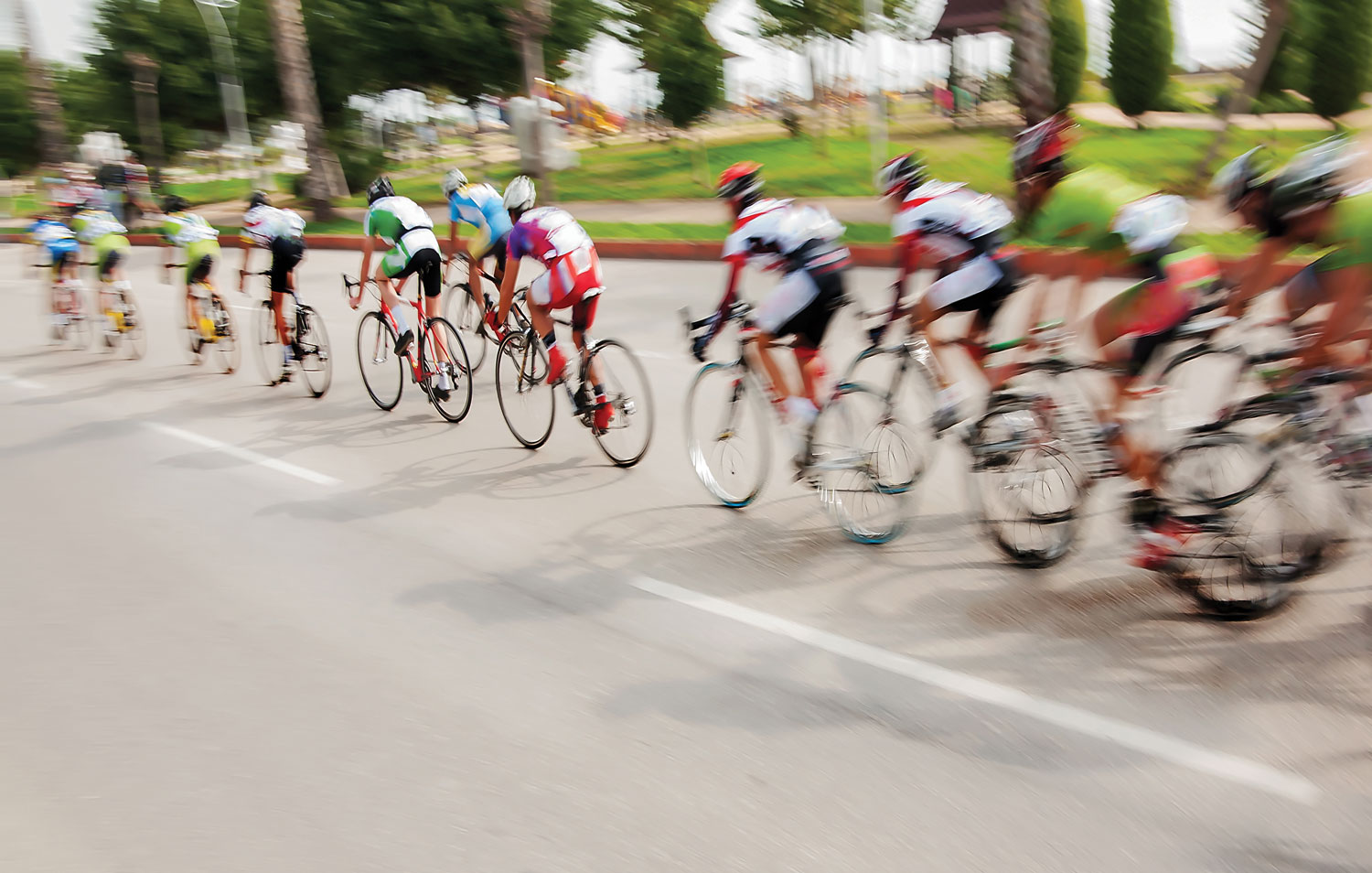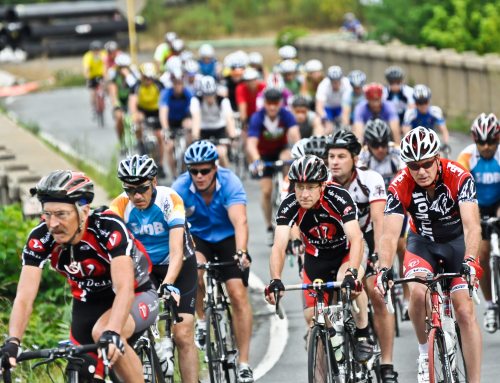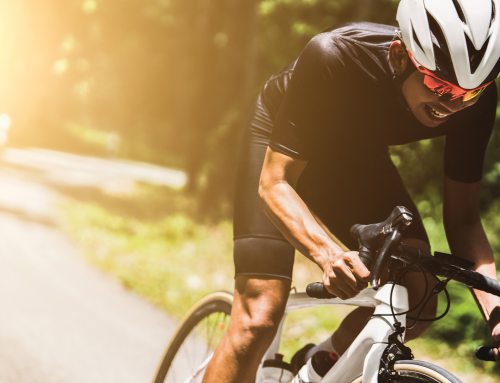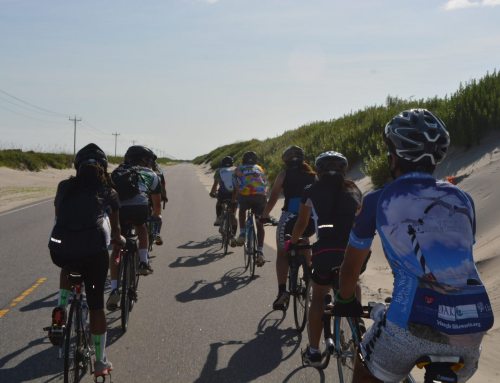By Thomas Henson, Cycling Advocate and Senior Partner at HensonFuerst Attorneys
Riding in a paceline transforms a solitary activity into a team sport that demands skill, focus, and athleticism. For new riders, a paceline can increase stamina and confidence on the road. For experienced cyclists, a paceline is a great way to train for a race, pushing performance to a higher level while building camaraderie among teammates.
Unfortunately, pacelines also can be dangerous. One wrong move, one moment of inattention can send you head over wheels, resulting in a concussion, brain trauma, shoulder injuries, or other bodily damage. Knowing the proper way to ride in a paceline can help you avoid injury and stay on the road. A paceline is a group of cyclists riding in a tight line. One rider pulls out in front and acts as the temporary leader, while the rest of the group—a singular following rider or dozens of riders—follow behind.
The value of a paceline comes down to simple physics: As the lead rider surges forward, she creates a wake of turbulent air behind her. Any cyclist riding within the wake will be propelled forward by circulating currents of air. This process, called “drafting,” creates an energy savings of about 20 to 30 percent for all following cyclists. The draft effect isn’t minor—you can feel it, almost as if an invisible lasso is helping to pull your bike along.
The wake extends approximately six feet from the back of the bike in front. In order to take advantage of the wake, a follower’s front wheel needs to be somewhere within the 6-foot draft zone from the rear wheel of the leader.The closer you follow, the greater the draft advantage. That’s why professional cyclists stay within inches of each other, but amateur riders need more room to maneuver in the event of a road emergency. You still get a good draft effect by riding within 16 to 24 inches of the bike ahead, but if you feel more comfortable with a 3- or 4-foot distance, go with it.
Safe and effective paceline riding
When you ride in a paceline, your actions affect the entire team. Therefore, the ride is only as safe as its weakest rider. Want to get the most out of a paceline?
Ride with cyclists who have abilities similar to your own. Strong cyclists will be frustrated and unchallenged by a team of weaker riders, and weak cyclists will have a difficult time keeping up in a stronger team.
Ride in a single-file line. If you’re riding with a large group of people, you can create a double paceline—two lines side by side—but that also increases the number of factors that you need to pay attention to in order to stay safe. I don’t recommend riding in anything but a straight line for newer riders.
Pull at a consistent speed with constant pedaling. If you’re pedaling at 20 mph, coasting—even for a second—reduces your speed dramatically. It’s enough to send the bike in back crashing into your rear tire.
Communicate Clearly. If you’re five riders back, you can’t see potholes, sticks, or other road hazards. Agree on a set of signals that will allow all riders to know about potential dangers. In my paceline we use simple verbal cues: “Car up” means a car is approaching from the front; “car back” means a vehicles is coming from behind; “car left” and “car right” indicate cross traffic. Plus, there is always the universal signal of pointing to show where there is a problem in the road. Also use the proper hand signals to indicate that you are slowing or stopping.
Leading a paceline
Because the leader expends considerably more energy than all the followers, it’s a tough position to hold for very long, so it constantly changes. The amount of time spent in the lead is determined by cycling speed, terrain, and the leader’s fitness level. A leader may switch positions after 30 seconds, two minutes, or longer—it’s an individual decision.
When a leader is ready to rotate positions, he pulls out to the left and slows down. As he drifts back, the rest of the paceline continues forward. The former leader then falls into place in back. No special communication is necessary: Pulling to the left and slowing signifies the leader’s desire to rotate out. However, a verbal signal of “pulling off” never hurts.
Remember that the overall goal of a paceline is to provide a safe, supportive workout for the team. That means adapting the rules to accommodate everyone in the group. You may decide to keep new or weaker cyclists toward the back of the paceline, allowing stronger cyclists to take the lead for longer periods of time…at least until weaker riders get stronger and more confident. While a paceline may seem intimidating, it will eventually feel as natural as solo ride, but with the added benefit of having a team with you.
Ride safe, and we’lll see you on the road!
Do you have a legal question about cycling that you would like to see answered? If so, please email it to ThomasHenson@lawmed.com.
Thomas is the senior partner at HensonFuerst, PA attorneys, where he leads the Personal Injury and Catastrophic Injury Divisions of the firm. He spends much of his time on safety education and injury prevention, especially for children and in the cycling context. Thomas serves on the Board of Directors for the Brain Injury Association of North Carolina, and was appointed by the Governor to serve on the North Carolina Brain Injury Advisory Council, whose duties include advising the Governor and the Legislature regarding brain injury issues, as well as promoting and implementing injury prevention strategies across the state. Thomas loves cycling, especially with his wife, Terry, and son, Alex.







